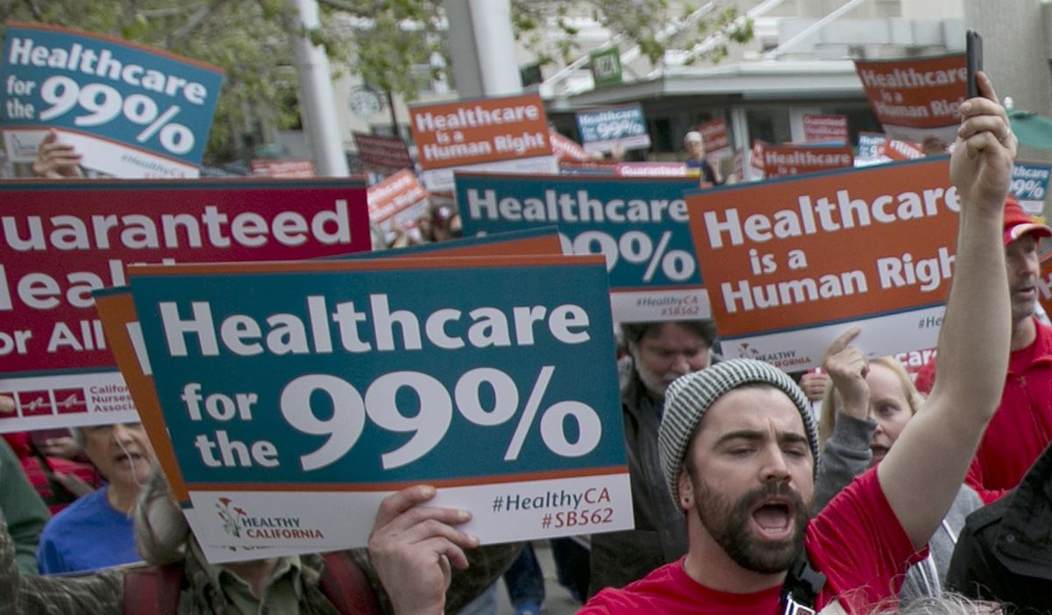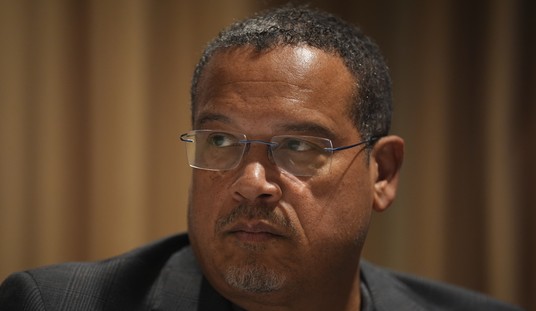You may remember the battle over the public option, an idea that was designed to gradually turn Obamacare into single-payer over time. The idea was that Obamacare exchanges would offer some sort of non-profit plan to compete with all the for-profit insurance plans. Over time it was assumed more people would select the public option until it had eventually captured the whole market. The initial plans for a public option fell by the wayside but three states have instituted some version of a public option. Politico reported Tuesday that, so far, it hasn’t worked as planned.
In Colorado, which is enrolling people in its public option for the first time this year, only one insurance company out of eight met all the cost-cutting targets set by lawmakers.
In Nevada, officials face an uphill battle implementing a policy the state’s incoming Republican governor called “bullshit” — and the state is already proposing easing targets for insurers to account for higher-than-expected medical inflation.
And in Washington state, which was the first to pass a public option in 2019, enrollment remains paltry, and while the cost of the health insurance plans has decreased, state health officials said the policies available are still too expensive.
“It’s still got a ways to go,” said Washington state Rep. Eileen Cody (D), who sponsored the state’s public option bill. “It’s not exactly what I had envisioned — I’ll put it that way.”…
“I don’t know that any state has hit upon the magical solution that’s going to bring costs down,” said Sabrina Corlette, research professor, founder, and co-director of the Center on Health Insurance Reforms at Georgetown University’s McCourt School of Public Policy.
The plans put in place in these three states aren’t true public options as Kaiser Health News points out. It’s more of a regulatory scheme aimed at private insurers.
The Colorado Option isn’t a true public option, the kind designed and run by the state to compete with private health insurance. Instead, state lawmakers, in an effort to force private insurance companies to offer more comprehensive coverage at lower prices, passed compromise legislation. That law directed the state to create a standard package of benefits with set deductibles and cost-sharing amounts that would then be offered by private health plans for individuals and small businesses.
Health insurers offering Colorado Option plans are required, after some accounting for inflation, to shave 5% off their 2021 premiums each year for three years, achieving a 15% total reduction. Starting next year, if insurers fail to meet those premium targets, the state will hold hearings to determine why and could set rates that insurers would pay hospitals and other providers under the plan…
Amanda Massey, executive director of the Colorado Association of Health Plans, which has opposed the Colorado Option, said that most consumers choose plans based solely on the premium. Decisions made by the Division of Insurance in creating the standard plan increased premiums, she said. “The Colorado Option isn’t going to be the cheapest because it has very rich benefits,” Massey said. “The richer the benefit package, the more expensive it’s going to be. It’s simple math.”
Earlier this month, City Journal went into a bit more detail about why these public option schemes haven’t actually been able to reduce costs significantly.
A public option doesn’t automatically reduce insurers’ administrative costs, which mostly result from assessing the legitimacy of reimbursement claims made by medical providers. In fact, state public options all use private insurers to process claims. Nor can public options easily purchase care at a discount: if they pay less than the market rate, physicians will simply opt to treat patients from private plans instead, while hospitals will similarly resist attempts to cut their revenues.
These problems are increasingly apparent. The public option in Washington State struggled to draw hospitals and has thus been unavailable in most counties. After it hiked rates to entice them, public plans were priced higher than those of private competitors, and so attracted few enrollees…
For all the claims that the public option will slow the growth of health-care costs, the experience of hospital politics and federal aid to states suggests that stepped-up regulation of hospital pricing is more likely to drive them higher still.
Two more states, Oregon and Kentucky, were reportedly looking at creating some kind of public option earlier this year but Kentucky has since put its plan on hold.
It doesn’t appear that these heavily regulated plans relying on price controls are going to win over a lot of new customers. The only way to reduce costs is to limit coverage or to limit payments. Democrats don’t want to do the former and doctors and hospitals are unwilling to accept the latter. The only way to make this work is to have a monopoly on payments, i.e. single-payer where the government sets the rates and doctors have little choice but to accept them.








Join the conversation as a VIP Member